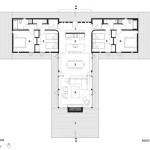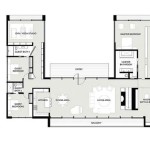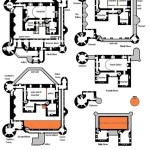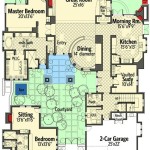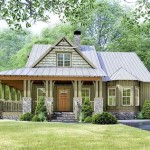Designing a house floor plan encompasses the process of creating a detailed blueprint that outlines the layout, structure, and spatial arrangement of a house. It involves meticulously planning the placement of rooms, hallways, stairs, and other essential elements to ensure optimal functionality, flow, and aesthetics.
Floor plans play a crucial role in the construction and renovation of houses, serving as a roadmap for builders and contractors to execute the project efficiently. They provide a visual representation of the house, allowing architects and designers to optimize space utilization, maximize natural lighting, and incorporate energy-efficient features.
When designing a house floor plan, it is essential to consider the following key points:
- Functionality
- Flow
- Space utilization
- Natural lighting
- Energy efficiency
- Privacy
- Aesthetics
- Cost
- Scalability
- Future needs
By carefully considering these aspects, you can create a floor plan that meets your specific requirements and enhances the overall livability of your home.
Functionality
Functionality refers to the practical aspects of a house floor plan, ensuring that the layout and design meet the needs and lifestyle of the occupants. It involves carefully considering the placement and size of rooms, hallways, and other spaces to maximize efficiency, comfort, and convenience.
- Efficient traffic flow: A well-designed floor plan allows for smooth and effortless movement throughout the house. Rooms should be connected logically, with natural pathways that minimize congestion and wasted space. Clear sightlines and wide hallways enhance accessibility and safety.
- Adequate storage: Ample storage space is essential for maintaining an organized and clutter-free home. Floor plans should incorporate built-in storage solutions, such as closets, cabinets, and shelves, in strategic locations throughout the house. This helps keep belongings neatly stored and easily accessible.
- Optimized room sizes: Each room in the house should be appropriately sized to accommodate its intended use. Living rooms should be spacious enough for comfortable seating and entertainment, while bedrooms should provide ample space for furniture and personal belongings. Bathrooms and kitchens require careful planning to ensure efficient use of space and easy access to fixtures.
- Multi-purpose spaces: Incorporating multi-purpose spaces into the floor plan can enhance flexibility and adaptability. Rooms can be designed to serve multiple functions, such as a guest room that doubles as a home office or a playroom that can be converted into a study area as children grow older.
By prioritizing functionality in the design process, you can create a house floor plan that supports the daily routines and activities of the occupants, fostering a comfortable and efficient living environment.
Flow
Flow refers to the smooth and logical transition between spaces within a house floor plan. A well-designed flow enhances the functionality and livability of the home, creating a comfortable and inviting atmosphere for occupants and guests alike.
- Clear circulation paths: The floor plan should prioritize clear and unobstructed circulation paths throughout the house. Main pathways, such as hallways and corridors, should be wide enough to allow for easy movement and avoid congestion. Doors and windows should be strategically placed to minimize traffic interruptions and promote efficient flow.
- Logical room adjacencies: Careful consideration should be given to the adjacencies of different rooms. Frequently used spaces, such as the kitchen, dining room, and living room, should be positioned near each other to facilitate movement and interaction. Private areas, such as bedrooms and bathrooms, should be grouped together and separated from public areas for privacy and tranquility.
- Minimized backtracking: A well-designed floor plan minimizes the need for backtracking and circuitous routes. Rooms should be arranged in a way that allows for efficient movement between commonly used spaces. For example, the kitchen should be easily accessible from both the dining room and the living room, eliminating the need to walk through unnecessary hallways.
- Visual connections: Creating visual connections between different spaces can enhance flow and create a sense of spaciousness. Open floor plans, where multiple rooms flow seamlessly into each other, promote a sense of openness and encourage interaction. Large windows and doorways can also be used to create visual connections and bring natural light into the home.
By carefully considering flow in the design process, architects and homeowners can create house floor plans that are both functional and inviting, fostering a harmonious and comfortable living environment.
Space utilization
Space utilization refers to the efficient and effective use of available space within a house floor plan. It involves carefully planning the layout and design to maximize usable area, minimize wasted space, and create a sense of spaciousness and comfort.
- Compact design: A compact design prioritizes space efficiency by minimizing the overall footprint of the house while still meeting the required functional needs. This can be achieved through clever space planning, such as incorporating built-in storage solutions, using multi-purpose furniture, and optimizing the use of vertical space. By reducing unnecessary hallways, large foyers, and wasted corners, compact designs create a more efficient and livable home.
- Open floor plans: Open floor plans are characterized by the absence of walls or partitions between certain living areas, such as the kitchen, dining room, and living room. This creates a sense of spaciousness and allows for a more fluid and interactive living environment. Open floor plans are particularly well-suited for smaller homes or those that emphasize natural light and a connection to the outdoors.
- Flexible spaces: Flexible spaces are designed to adapt to changing needs and lifestyles. For example, a room can be designed to serve multiple functions, such as a guest room that can also be used as a home office or a playroom that can be converted into a study area as children grow older. Flexible spaces maximize space utilization and allow homeowners to adjust their living environment as their needs evolve.
- Vertical space utilization: Making efficient use of vertical space can significantly increase the usable area of a house. This can be achieved through features such as lofts, mezzanines, and built-in shelves that extend towards the ceiling. Vertical space utilization is particularly beneficial in smaller homes or those with limited horizontal space.
By carefully considering space utilization in the design process, architects and homeowners can create house floor plans that maximize functionality, comfort, and perceived spaciousness, even within limited square footage.
Effective space utilization not only enhances the livability of a home but also contributes to its overall value and appeal. By incorporating space-saving design strategies, homeowners can create homes that are both stylish and practical, meeting their present and future needs.
Natural lighting
Natural lighting plays a crucial role in creating a healthy, comfortable, and visually appealing living environment. Incorporating natural lighting into a house floor plan offers numerous benefits, including reduced energy consumption, improved mood and well-being, and enhanced aesthetics.
- Increased energy efficiency:
Utilizing natural lighting can significantly reduce the need for artificial lighting during daytime hours, leading to lower energy consumption and cost savings. By strategically placing windows and skylights to maximize daylight penetration, architects can design homes that are naturally illuminated, reducing reliance on electrical lighting.
- Enhanced mood and well-being:
Natural light has been shown to have a positive impact on mood, sleep patterns, and overall well-being. Exposure to sunlight can boost serotonin levels, promoting a sense of happiness and reducing symptoms of depression. Additionally, natural light can regulate the body’s circadian rhythm, improving sleep quality and overall health.
- Improved aesthetics:
Natural lighting enhances the visual appeal of a home by creating brighter and more inviting spaces. Daylight illuminates interior finishes and furnishings, showcasing their textures and colors. Natural light can also create dramatic effects, such as shafts of light streaming through windows or soft, diffused illumination from skylights.
- Reduced glare and eye strain:
Properly designed natural lighting can minimize glare and eye strain, promoting visual comfort for occupants. Strategically placed windows and skylights can diffuse sunlight, reducing harsh shadows and creating a more evenly lit environment. This is particularly important in spaces where people spend extended periods of time, such as living rooms, home offices, and kitchens.
By incorporating well-thought-out natural lighting strategies into house floor plans, architects and designers can create homes that are not only beautiful and energy-efficient but also contribute to the health and well-being of the occupants.
Energy efficiency
Incorporating energy-efficient principles into a house floor plan is crucial for minimizing energy consumption, reducing operating costs, and promoting sustainable living. By carefully considering factors such as insulation, window placement, and the use of renewable energy sources, architects and homeowners can create homes that are not only comfortable but also environmentally friendly.
- Proper insulation:
Insulating the building envelope, including walls, ceilings, and floors, is essential for reducing heat loss during winter and heat gain during summer. Proper insulation helps maintain a stable indoor temperature, reducing the need for excessive heating or cooling. This not only saves energy but also enhances occupant comfort and reduces energy bills.
- Energy-efficient windows:
Windows are a significant source of heat loss in homes. Choosing energy-efficient windows with double or triple glazing, low-emissivity coatings, and tight seals can significantly reduce heat transfer. Properly placed windows can also maximize natural lighting, reducing reliance on artificial lighting and further contributing to energy savings.
- Passive solar design:
Passive solar design involves orienting the house to take advantage of the sun’s natural heat. By positioning windows and rooms strategically, architects can design homes that absorb and retain heat during winter months, reducing the need for additional heating. Passive solar design also promotes natural ventilation, further reducing energy consumption.
- Renewable energy integration:
Incorporating renewable energy sources, such as solar panels or geothermal systems, into a house floor plan can significantly reduce reliance on fossil fuels. Solar panels can generate electricity, while geothermal systems can provide heating and cooling, reducing energy costs and promoting sustainable living.
By adopting these energy-efficient strategies in house floor plans, architects and homeowners can create homes that are more comfortable, environmentally friendly, and cost-effective to operate, contributing to a more sustainable built environment.
Privacy
Privacy is an important consideration in house floor plan design, ensuring that occupants have spaces where they can retreat for solitude and comfort. Careful planning can create a home that balances the need for communal spaces with private areas for each individual.
- Separate public and private areas:
The floor plan should clearly delineate between public areas, such as the living room, dining room, and kitchen, and private areas, such as bedrooms and bathrooms. This separation provides a sense of privacy for occupants, allowing them to retreat to their own spaces when desired.
- Strategic placement of bedrooms:
Bedrooms should be located in areas of the house that offer privacy and minimize noise disturbances. Ideally, bedrooms should be situated away from high-traffic areas and potential sources of noise, such as the kitchen or living room. Creating separate bedroom wings or placing bedrooms on upper floors can further enhance privacy.
- Private outdoor spaces and retreats:
Incorporating private outdoor spaces, such as balconies, patios, or courtyards, into the floor plan provides occupants with areas where they can enjoy solitude and connect with nature. These spaces can be designed to offer seclusion from other parts of the house and surrounding areas.
- Soundproofing and noise reduction:
Adequate soundproofing and noise reduction measures should be incorporated into the floor plan to minimize noise transmission between rooms. This can be achieved through the use of soundproofing materials in walls and ceilings, carpeting, and the strategic placement of furniture and other noise-absorbing elements.
By considering these privacy-related factors in house floor plan design, architects and homeowners can create homes that provide a balance between communal living spaces and private retreats, fostering a sense of comfort, individuality, and well-being for all occupants.
Aesthetics
Aesthetics play a significant role in house floor plan design, as they influence the overall visual appeal, style, and character of the home. Careful consideration of aesthetic principles can create a harmonious and visually pleasing living environment that enhances the well-being of occupants.
- Architectural style:
The architectural style of the house should be reflected in the floor plan. Factors such as the shape of the house, the roofline, and the exterior finishes should be consistent with the desired architectural style. This ensures a cohesive and visually appealing design.
- Flow and symmetry:
The floor plan should exhibit a sense of flow and symmetry to create a visually balanced and harmonious space. Rooms should be connected in a logical and aesthetically pleasing manner, avoiding abrupt transitions or awkward corners. Symmetrical arrangements can add a sense of order and formality to the design.
- Color scheme and materials:
The color scheme and materials used in the floor plan should complement the overall aesthetic of the house. Colors should be carefully chosen to create a cohesive and inviting atmosphere. The selection of materials, such as flooring, countertops, and cabinetry, should also reflect the desired style and contribute to the overall visual appeal.
- Natural light and views:
Incorporating natural light and views into the floor plan can significantly enhance the aesthetics of the home. Windows and skylights can be strategically placed to maximize natural illumination and create a sense of spaciousness. Framing beautiful views of the surrounding landscape can add to the visual appeal and create a connection between the interior and exterior spaces.
By considering these aesthetic principles in house floor plan design, architects and homeowners can create homes that are not only functional and comfortable but also visually pleasing and inspiring, contributing to the overall well-being and enjoyment of the occupants.
Cost
Cost is a significant factor to consider when designing a house floor plan. The size, complexity, and materials used in the construction can all have a significant impact on the overall cost of the project. The following are key factors that influence the cost of a house floor plan:
- Size:
The size of the house is a major determinant of cost. Larger homes require more materials, labor, and time to build, resulting in higher construction costs.
- Complexity:
Complex floor plans with intricate designs, such as curves, angles, or multiple levels, require more skilled labor and specialized materials, leading to increased costs.
- Materials:
The choice of materials used in the construction can significantly impact the cost of the floor plan. Higher-quality materials, such as natural stone, hardwood flooring, and custom cabinetry, come at a premium compared to standard materials.
Other factors that can affect the cost of a house floor plan include the location of the property, labor costs in the area, and the availability of skilled contractors. It is important to carefully consider these factors and set a realistic budget before finalizing the floor plan design.
To optimize cost-effectiveness, homeowners can consider the following strategies: choosing a simpler floor plan design, using cost-effective materials, and exploring pre-designed floor plans that offer a balance between cost and functionality.
By carefully considering cost implications during the floor plan design phase, homeowners can make informed decisions that align with their budget and long-term financial goals.
Scalability
Scalability refers to the ability of a house floor plan to adapt to changing needs and circumstances over time. A well-designed floor plan considers future expansion and modifications, allowing homeowners to adjust their living space as their family grows, lifestyle evolves, or unforeseen events occur.
- Flexible room sizes and layouts:
Scalable floor plans incorporate flexible room sizes and layouts that can be easily reconfigured to accommodate different uses and needs. For example, a room designed as a guest room can be converted into a home office or a playroom as required, without major structural changes.
- Modular design:
Modular design involves dividing the floor plan into smaller, self-contained units or modules. These modules can be added or removed as needed, allowing for easy expansion or reduction of the living space. Modular design provides a high level of flexibility and adaptability, enabling homeowners to customize their home to suit their evolving needs.
- Multi-purpose spaces:
Incorporating multi-purpose spaces into the floor plan enhances scalability and adaptability. Rooms can be designed to serve multiple functions, such as a guest room that doubles as a home office or a playroom that can be converted into a study area as children grow older. Multi-purpose spaces maximize space utilization and provide flexibility to adjust the home’s layout as needs change.
- Future-proof infrastructure:
Scalable floor plans consider future-proofing the home’s infrastructure to accommodate potential additions or modifications. This includes providing adequate electrical capacity, plumbing, and HVAC systems to support future expansion or changes in room usage. By planning for future needs, homeowners can avoid costly retrofits or renovations down the line.
Embracing scalability in house floor plan design allows homeowners to create living spaces that can evolve and adapt alongside their changing needs and circumstances, ensuring a comfortable and functional home for years to come.
Future needs
When designing a house floor plan, it is essential to consider future needs and potential changes in lifestyle. This anticipatory approach ensures that the home remains adaptable and functional over the years, accommodating evolving requirements and unforeseen circumstances.
One aspect to consider is the potential for family growth or changes in household composition. A scalable floor plan allows for easy expansion or reconfiguration of rooms to accommodate additional bedrooms, bathrooms, or living spaces. Flexible room sizes and layouts provide versatility to transform spaces as needed, avoiding costly renovations or additions in the future.
Moreover, future needs may include accessibility considerations. Incorporating universal design principles, such as wider doorways, accessible showers, and ramps, can ensure that the home remains comfortable and safe for occupants of all ages and abilities. Planning for future accessibility needs promotes independent living and reduces the likelihood of costly modifications later on.
Technological advancements and changing lifestyles also warrant consideration. Smart home features and infrastructure, such as automated lighting, voice-controlled devices, and energy-efficient systems, can be integrated into the floor plan to enhance comfort, convenience, and sustainability. Additionally, providing dedicated spaces for home offices, fitness areas, or hobbies can accommodate evolving work and leisure needs.
By thoughtfully considering future needs and incorporating adaptability into the house floor plan, homeowners can create a living space that seamlessly evolves alongside their changing circumstances, ensuring a comfortable, functional, and future-proof home for years to come.









Related Posts



